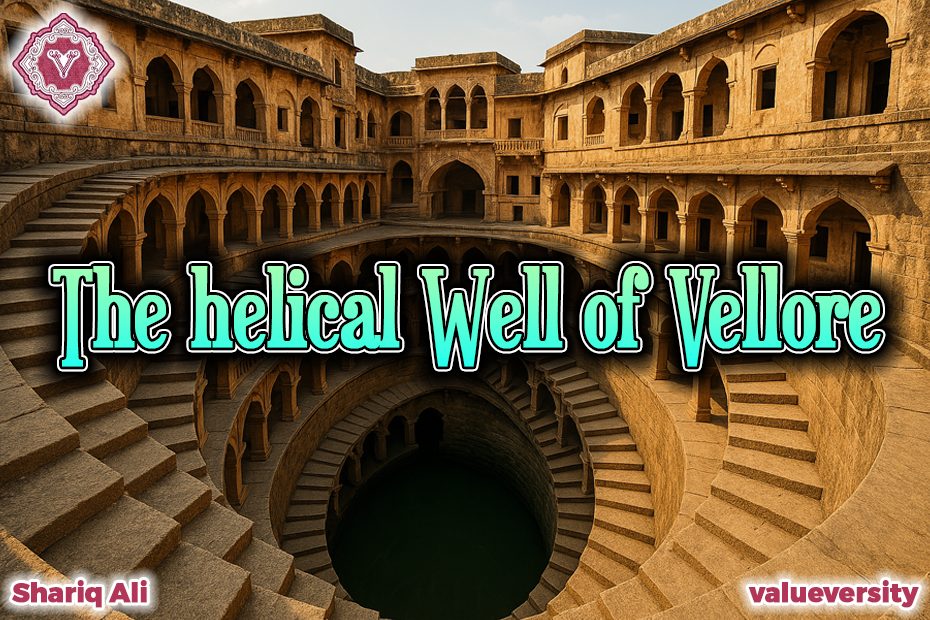The helical Well of Vellore
Shariq Ali
Valueversity
When the sun’s heat becomes unbearable, the land dries up, there’s no sign of clouds anywhere, and the cool shade of trees becomes just a dream—what if, in such a time, there’s a source of underground water that you can reach by stepping down gradually into the earth? As spiral staircases take you deeper into cool chambers and balconies, the rising breeze from below turns the scorching heat into a pleasant sensation—it would seem like something out of a dream.
But I am not talking about a mythical tale. This is reality.
This is about a unique well in the city of Vellore, Maharashtra, known as the Helical Stepwell, or “the well with spiral stairs.” The residential structures built around it reveal that it wasn’t merely a solution for water scarcity, but also a brilliant feat of engineering—a living testament to the skill and mastery of the architects of that era.
This well was built in the 16th century, at a time when there was no electricity, no machinery, and not even cement. And yet, its structure, the arrangement of the steps, and the living quarters are so beautiful and cohesive that even modern architectural experts are left astonished.
This place was more than just a water source. People came here to pray, to seek refuge from the heat, to celebrate festivals, to engage in daily conversations, and to hold social gatherings. It not only provided water but also served as a social hub that brought hearts together.
Its helical design—the spiraling staircase—feels like an artistic vortex drawing you into the earth. As you descend, the path transforms into a silent museum where stone, light, shadow, and human craftsmanship seem to whisper to one another.
Today, this stepwell stands as a historical monument—a living testimony that when humans create in harmony with nature, even the seemingly impossible becomes possible.
